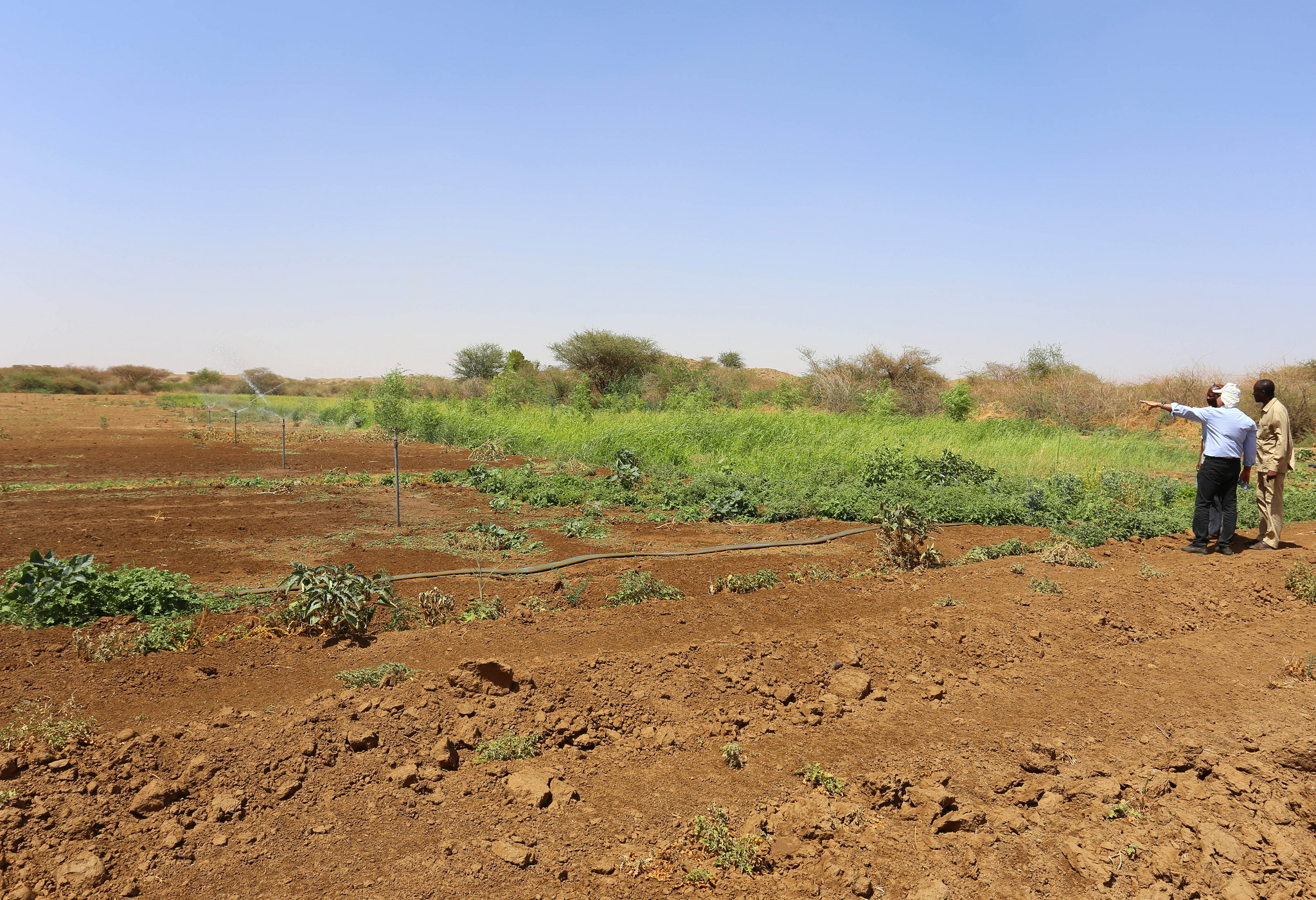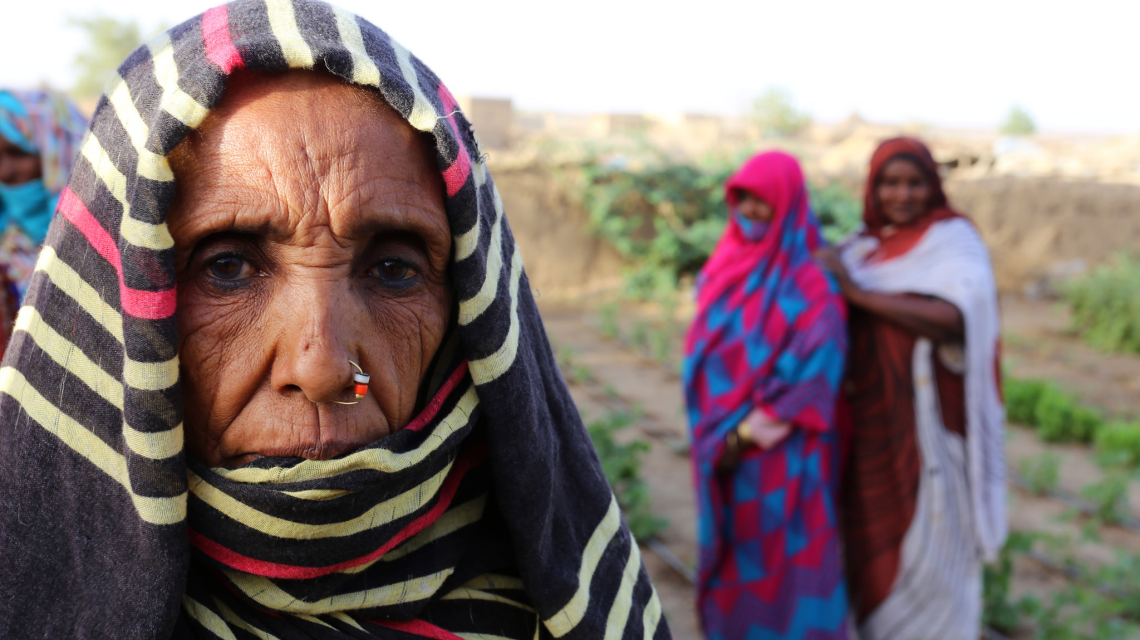Every drop counts
The low cost drip irrigation system is easy to install and simple to use: it involves a giant raised tub of water that is controlled by an on-off valve, which, when switched on, uses gravity to draw the water mixed with fertilizer down into a series of tubes placed directly at the base of the plants. Using this method of combining water and fertilizer through drip irrigation is called ‘fertigation’.
“Although not a new technology in itself, it is only when set up correctly and optimized using scientific data that drip irrigation can be effective with very little water waste,” said Heng. This system and fertigation method is promoted by the FAO for countries and regions where water is scarce and at a premium.
“What makes this drip irrigation system new and innovative is what has been released from ARC,” said Rashid Sir El Khatim, Coordinator from the Talawiet Organization for Development. The ARC provides local NGOs like Talawiet with a complete package for setting up and using drip irrigation and fertilizer, optimized through the scientific work done with IAEA support. “If you compare this drip irrigation system to other systems, there is a big difference. It can save water by up to 70%, which means there is enough water for more farming.”
Pilot studies were conducted in fields around Kassala state, along the border with Eritrea. This area is often called the ‘bread basket’ of Sudan as the soil is rich with nutrients, and when combined with adequate water, has shown to be an excellent environment for growing food. However, water supplies increasingly run short due to rising temperatures and climate change.
“Water, soil, temperature: it’s all a complete package,” said El Saddig Suliman Mohamed, ARC’s Director General. “Without a proper irrigation system, you can’t maximize yields, but on the other side, without using fertilizer right you can’t reach the soil’s full potential. Every component without the others is nothing. So we have to look at the whole package.”
Once the scientists determined the optimal amount of water and fertilizer needed for the crops to thrive, they helped set up the drip irrigation system and trained farmers to use it and to properly apply fertilizer. The training was distilled down to easy-to-follow instructions that reflected the scientific findings. This has allowed the farmers to benefit from the science while taking ownership of the process, from cultivating the fields to monitoring their crops and marketing their produce.
The success of the IAEA pilot project in reducing water use by up to 70% while increasing food yields by more than 40% drew the attention of other organizations throughout Kassala, such as the Sudanese Red Crescent (SRC) and Talawiet. With funding from the office of the United Nations High Commissioner for Refugees (UNHCR), FAO and the World Food Programme, among others, the Red Crescent and Talawiet have worked closely with IAEA-trained scientists from the ARC to set up and run more than 85 small-scale farms and home gardens for over 1050 women. Following the success of these projects, the ARC, Talawiet and the Red Crescent are now working to establish 15 drip irrigation systems for over 450 women in north and south Kassala State and Red Sea state. They are also working to expand into the neighbouring region of Butana.


